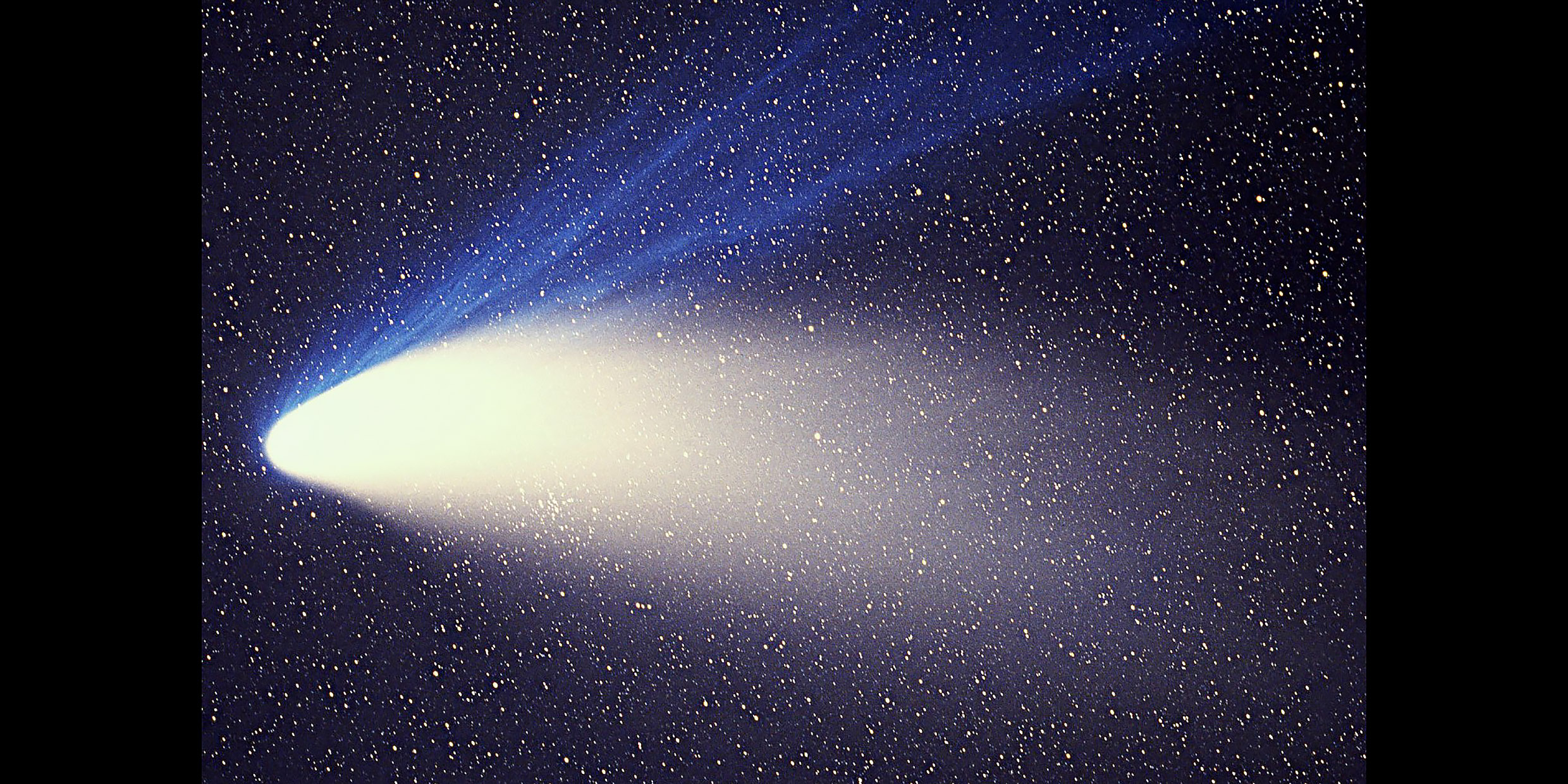Originally published 2 June 1997
In June 1995, Sky & Telescope magazine published an article by Mark Gingrich that posed the question: When are we likely to get the next great comet?
At that time, nearly two decades had passed since a good naked- eye comet had graced our skies. In the ’50s, Comets Mrkos and Arend-Roland put on a good show. The ’60s gave us Comets Seki-Lines, Bennet, and long-tailed Ikeya-Seki, the brightest comet of the century.
Comet Kohoutek, in 1974, was much ballyhooed but proved to be a bust. Comet West, in 1976, was a real beauty, but it appeared in the predawn sky and not many folks saw it.
Then nothing, except for those dime-a-dozen faint comets that astronomers observe every year through telescopes.
Statistically, said Gingrich, we were overdue for a Big One.
The very next month, on the evening of July 23, amateur astronomers Alan Hale and Thomas Bopp independently observed a faint blur in the constellation Sagittarius. Both men quickly realized they were looking at a previously unreported comet. They flashed word of their find to the Central Bureau for Astronomical Telegrams in Cambridge — thereby ensuring that their names would be attached to the comet.
The new comet had been discovered farther out in the solar system than any other comet in history, and longer before it reached perihelion, its closest approach to the sun. Its physical size was estimated to be bigger than the famous Comet Halley. It soon became clear that Hale-Bopp had the potential to be the Big One.
Then, as if nature was filling a vacuum with a vengeance, Comet Hyakutake was discovered in late January 1996. At closest approach, several months later, it was not as bright as Hale-Bopp would become, but its tail stretched halfway across the sky. Two Big Ones in two years!
It was Hale-Bopp that caught the public’s fancy. Partly because of its name, which has a whimsical quality. Certainly because of its great apparent brightness and prime-time appearance in the evening sky.
More people probably observed Comet Hale-Bopp than any other comet in history.
And it could have been even better.
The orbits of Hyakutake and Hale-Bopp brought both objects close to the orbit of the Earth, within 10 million miles or so. By chance, Hyakutake arrived at its near-intersection with Earth’s orbit just as the Earth was also there. Although Hyakutake was not large in size, our close approach accounted for its great apparent brightness, its long tail, and its relatively brief visit — zip — like a football just out of reach.
Comet Hale-Bopp came closest to Earth’s orbit in early May of [1997], but at that time we were almost halfway around the sun from the place of near intersection, more than 100 million miles away. This distant view accounts for Hale-Bopp’s short apparent tail and its leisurely glide through morning and evening skies — like watching a football game from the top of the stands.
If Hale-Bopp had arrived four months earlier, it would have passed only 10 million miles from Earth. It would have cast shadows at night and been visible in the daytime — one of the brightest comets in history. The names of Alan Hale and Thomas Bopp would have been familiar to astronomers a thousand years from now.
And, of course, comet-related millennial madness would have reached such a crescendo as to make the Heaven’s Gate suicides seem like a Sunday School picnic.
All of which emphasizes the unpredictable nature of comets.
Astronomers believe the solar system is surrounded by a vast spherical cloud of comets, orbiting far beyond Pluto, containing perhaps a trillion potential naked-eye comets — an aura of icy dust balls left over from the solar system’s beginning. Only a tiny fraction of these objects are on orbits that take them into the inner part of the solar system.
Hale-Bopp’s trajectory last brought it to the inner solar system 4,200 years ago. It has probably been here before, perhaps many times, but no one was keeping score. There was no way we could have predicted its current visit. It fell out of the dark, like a roller coaster plummeting downward on its track, gathering speed, whipping around the sun, then making its slowing ascent back to the top.
During February, we watched it creep across the eastern sky in the hour before dawn, slowly brightening as it approached the sun, casting off a halo of dust and gas. In March, we saw the comet in both morning and evening, a child of dawn and twilight. April — the comet at its brightest, in the northwest at sunset. Then, during May, it slowly dissolved in the glow of the setting sun.
This week, observers in the southern hemisphere will get a last look before the comet recedes into the cold, icy realm where it spends most of its time, out there far beyond Pluto where the sun appears no brighter than a star, in the refrigerator of interstellar space that holds a trillion more comets in gravitational thrall to the sun.
Farewell Hale-Bopp. Thanks for the show. Sorry the timing wasn’t right for a spectacle of millennial proportions. Maybe next time — thousands of years from now.
In the meantime, we wait. Without a clue for when it might happen. Next week. Or a decade from now. For the next Big One.
The year 2007 brought the visitation of yet another Big One, Comet McNaught, which was best viewed in the skies of the southern hemisphere. ‑Ed.



